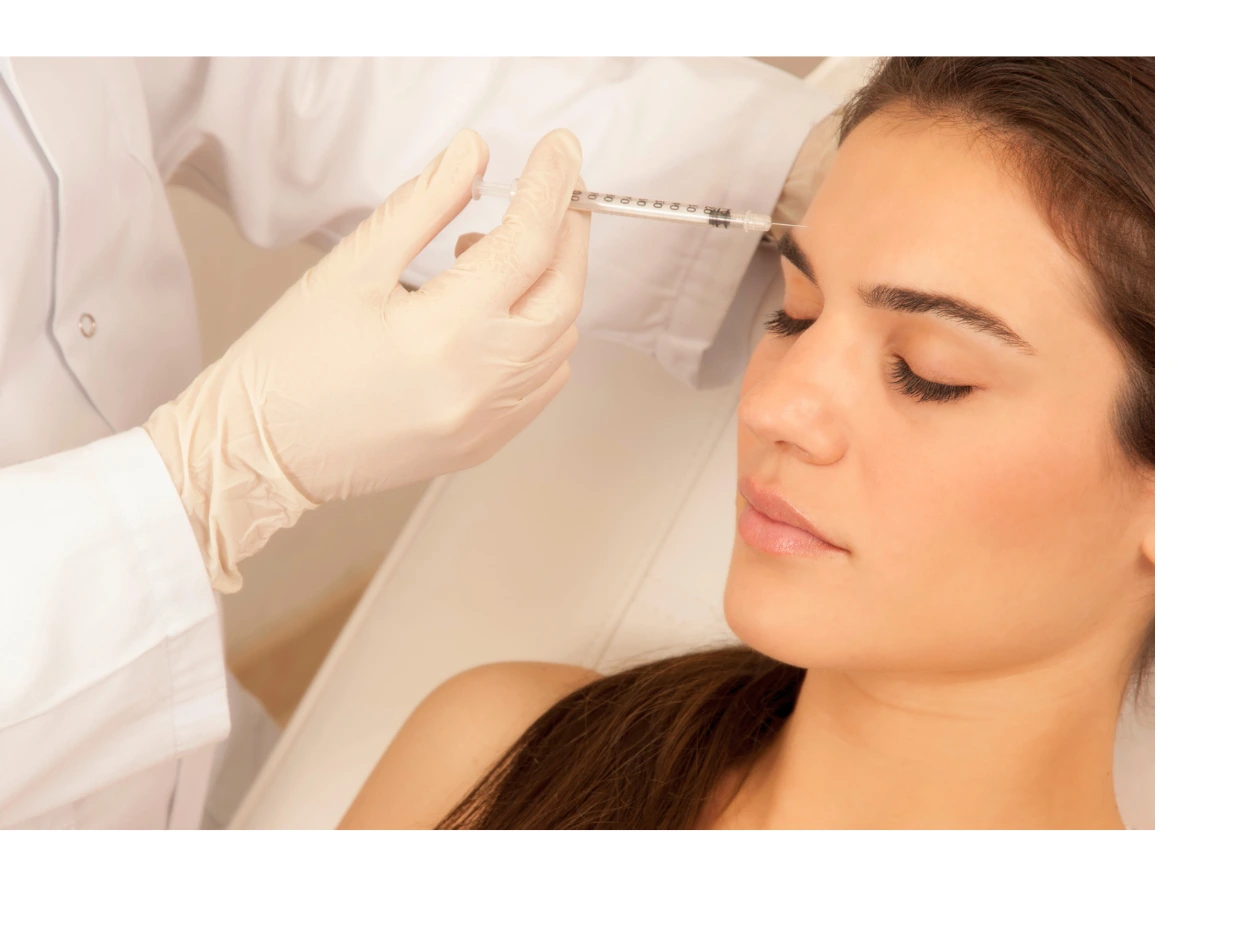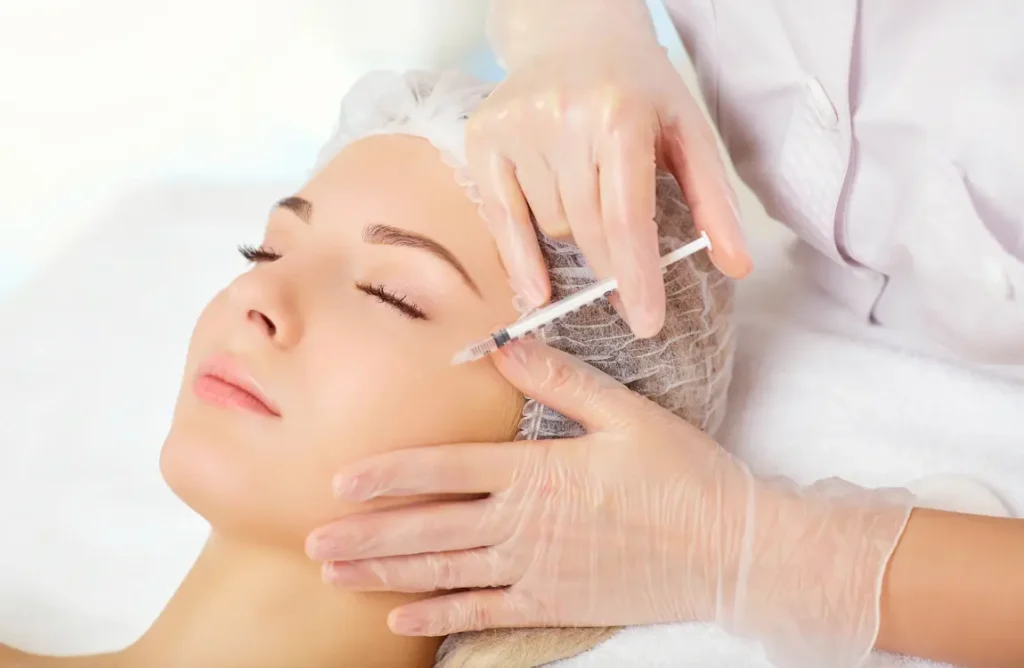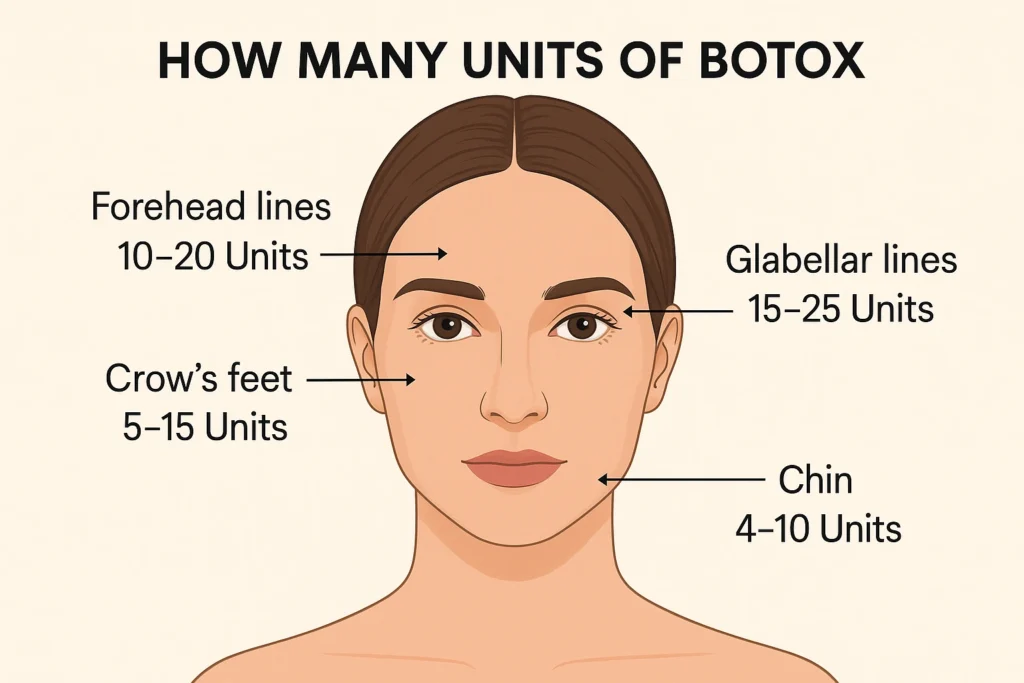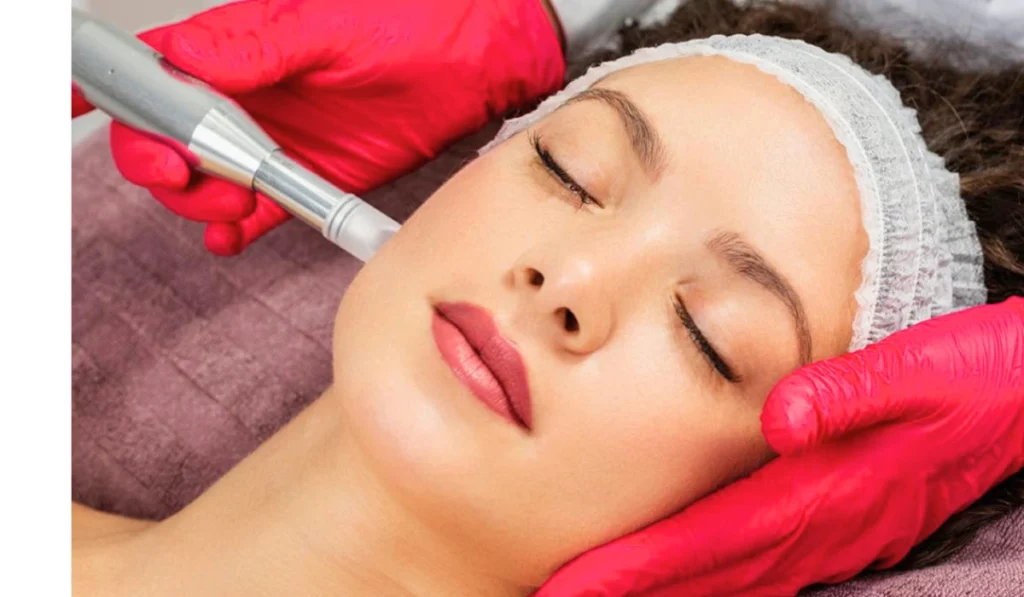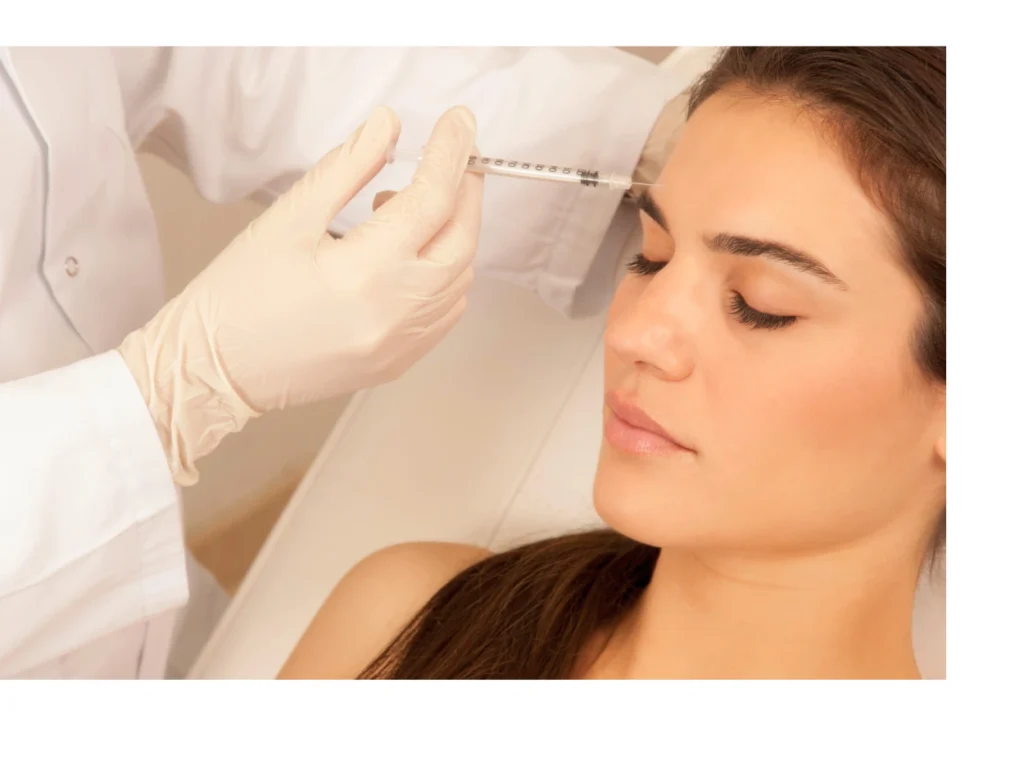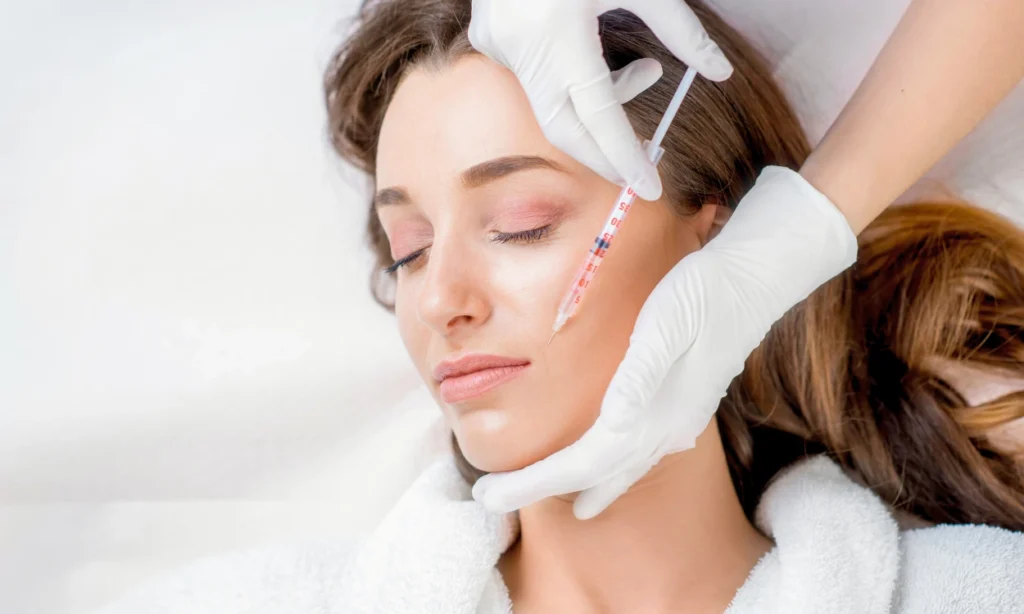The typical dose of Botox for the forehead ranges from 10 to 30 units. This amount can vary based on individual needs and the doctor’s assessment.
Now, let’s dive deeper into understanding Botox for the forehead. Botox is a popular cosmetic treatment. It reduces the appearance of wrinkles. Many people wonder how much Botox they need for their forehead. The right amount depends on factors like age, skin type, and muscle strength.
Consulting a professional ensures you get the best results. In this blog, we will explore how Botox works, factors influencing the dosage, and tips for a successful treatment. Understanding these aspects will help you make an informed decision. So, let’s explore the details of Botox for the forehead.
Introduction To Botox For Forehead
Botox is a popular treatment for reducing forehead wrinkles. It helps people achieve a smoother and younger-looking forehead. But how many units of Botox are needed for the forehead? This is a common question. Let’s explore the details.
What Is Botox?
Botox is a purified protein derived from the bacterium Clostridium botulinum. It temporarily relaxes muscles. This reduces the appearance of wrinkles and fine lines.
Common Uses Of Botox
Botox is used for various cosmetic and medical purposes. Here are some common uses:
- Reducing forehead wrinkles
- Smoothing crow’s feet around the eyes
- Minimizing frown lines between the eyebrows
- Treating excessive sweating
- Relieving chronic migraines
How Many Units Of Botox For Forehead?
The number of units needed varies from person to person. Typically, 10 to 30 units are used for the forehead. It depends on the severity of wrinkles and the desired outcome.
| Severity of Wrinkles | Recommended Units |
|---|---|
| Mild | 10-15 units |
| Moderate | 15-20 units |
| Severe | 20-30 units |
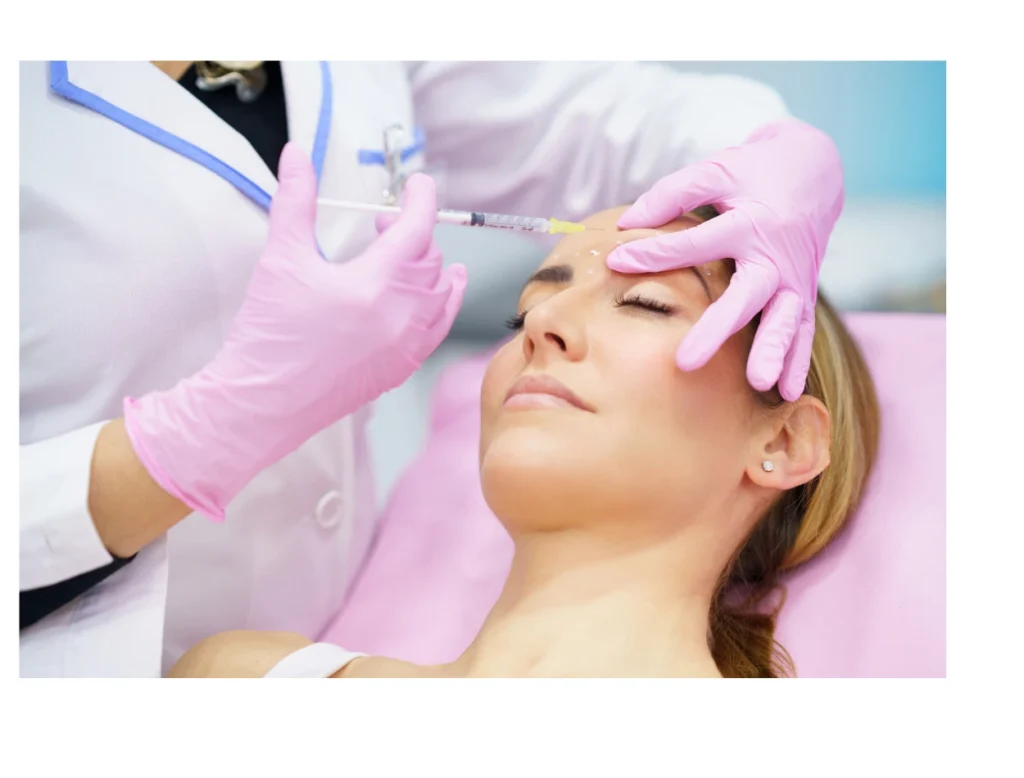
Ideal Candidates For Forehead Botox
Botox is popular for reducing forehead wrinkles. But, it’s not for everyone. Ideal candidates for forehead Botox should meet certain criteria. Understanding who benefits most can help you decide if Botox is right for you.
Who Should Consider Botox?
- People aged 18 to 65
- Individuals with moderate to severe forehead lines
- Those seeking non-surgical wrinkle reduction
- People in good overall health
You might consider Botox if you have persistent forehead lines. These lines can make you appear older or more stressed. Botox can help smooth these lines, giving you a more youthful look.
Health Considerations
| Health Factor | Details |
|---|---|
| Allergies | Ensure no allergies to Botox ingredients |
| Pregnancy | Not recommended for pregnant women |
| Neurological Conditions | Avoid if you have certain neurological issues |
| Medications | Consult if taking blood thinners or muscle relaxants |
Health is a key factor. Those with certain conditions should avoid Botox. Consult your doctor if you have any health concerns.
Determining The Right Units
The number of units of Botox needed for the forehead varies. It’s crucial to get the dosage right. Too much Botox can lead to a “frozen” look. Too little might not show any results.
Factors Influencing Dosage
Several factors affect how many units you need:
- Age: Older skin may need more units.
- Skin Thickness: Thicker skin might require more units.
- Muscle Strength: Stronger muscles can need a higher dose.
- Desired Results: The look you want affects the units needed.
Consultation With A Specialist
A consultation with a specialist is vital. They assess your skin and muscles. They ask about your goals. Based on this, they suggest the right units.
Here’s a table showing typical units for the forehead:
| Condition | Units Needed |
|---|---|
| Light Lines | 10-20 units |
| Moderate Lines | 20-30 units |
| Deep Lines | 30-40 units |
Remember, each person is unique. A specialist’s advice ensures the best results.
Procedure Overview
Understanding how many units of Botox are needed for the forehead is important. The procedure itself is straightforward but requires careful preparation and execution. The goal is to achieve a smooth, youthful appearance without overdoing it.
Preparing For The Procedure
Before your Botox treatment, it’s crucial to consult a professional. They will assess your forehead and discuss your goals. Avoid alcohol and anti-inflammatory medications for a week before. This helps reduce the risk of bruising. Arrive at the appointment with a clean face. No makeup or moisturizers.
What To Expect During Treatment
The Botox treatment for the forehead is quick and relatively painless. The professional will cleanse your forehead. They will then mark the injection points. A fine needle is used to inject the Botox. You might feel a slight pinch or discomfort. The entire process usually takes about 10-15 minutes. Afterward, you can resume your daily activities.
Post-treatment Care
Post-Treatment Care is vital for achieving the best results after Botox treatment. Proper care ensures you enjoy the full benefits and avoid any complications. This section covers essential steps for immediate aftercare and long-term maintenance.
Immediate Aftercare
After your Botox treatment, your skin needs special attention. Follow these steps for optimal results:
- Avoid touching or rubbing the treated area for at least 24 hours.
- Stay upright for four hours post-treatment to prevent the Botox from spreading.
- Refrain from strenuous exercise for 24 hours to reduce the risk of bruising.
- Do not expose your face to heat sources like saunas or hot baths.
- Avoid alcohol for 24 hours to minimize bruising and swelling.
Long-term Maintenance
Maintaining your forehead’s smooth appearance involves consistent care. Here’s how:
- Schedule follow-up treatments every 3 to 4 months to sustain results.
- Use a gentle cleanser and moisturizer to keep your skin healthy.
- Apply sunscreen daily to protect your skin from UV damage.
- Stay hydrated by drinking plenty of water.
- Incorporate a balanced diet rich in vitamins and minerals.
By following these tips, you ensure your Botox results last longer, and your skin remains healthy and youthful.
Potential Side Effects
Botox injections can provide a smoother forehead. But, they come with potential side effects. Understanding these side effects helps you make an informed decision. It ensures that you know what to expect after the treatment.
Common Side Effects
Botox for the forehead can cause some common side effects. These include mild pain at the injection site. You might notice redness or swelling. Bruising is also typical. Some people experience headaches. These effects usually go away after a few days. They are generally not severe.
When To Seek Medical Attention
Some side effects need immediate medical attention. Difficulty breathing is a serious sign. Muscle weakness in areas not treated can be alarming. If you experience vision problems, seek help. Swelling of the face or throat requires urgent care. Unusual symptoms should not be ignored.
Expert Tips For Optimal Results
Getting the best results from your Botox treatment involves several factors. Understanding how many units of Botox are needed for the forehead is just the beginning. To ensure the treatment is effective and safe, consider these expert tips.
Choosing The Right Practitioner
One key factor in achieving optimal results is selecting a skilled practitioner. Look for a certified professional with experience in administering Botox. A good practitioner will:
- Have a solid background in cosmetic treatments.
- Show a portfolio of previous work.
- Listen to your concerns and goals.
Having a consultation is vital. During this meeting, discuss the number of units required for your forehead. A seasoned practitioner will assess your muscle strength and skin elasticity. This ensures a personalized treatment plan.
Maximizing The Benefits
To get the most out of your Botox treatment, follow these tips:
- Follow post-treatment instructions: Avoid rubbing the treated area for 24 hours.
- Stay hydrated: Drink plenty of water to keep your skin healthy.
- Maintain a healthy lifestyle: Eat a balanced diet and avoid smoking.
Regular follow-up sessions are important. This helps maintain the effectiveness of the treatment. Your practitioner can adjust the number of units as needed.
Understanding these tips will help you achieve smooth and youthful-looking skin. Remember, the key is to choose the right practitioner and follow their advice. This ensures you get the best results from your Botox treatment.
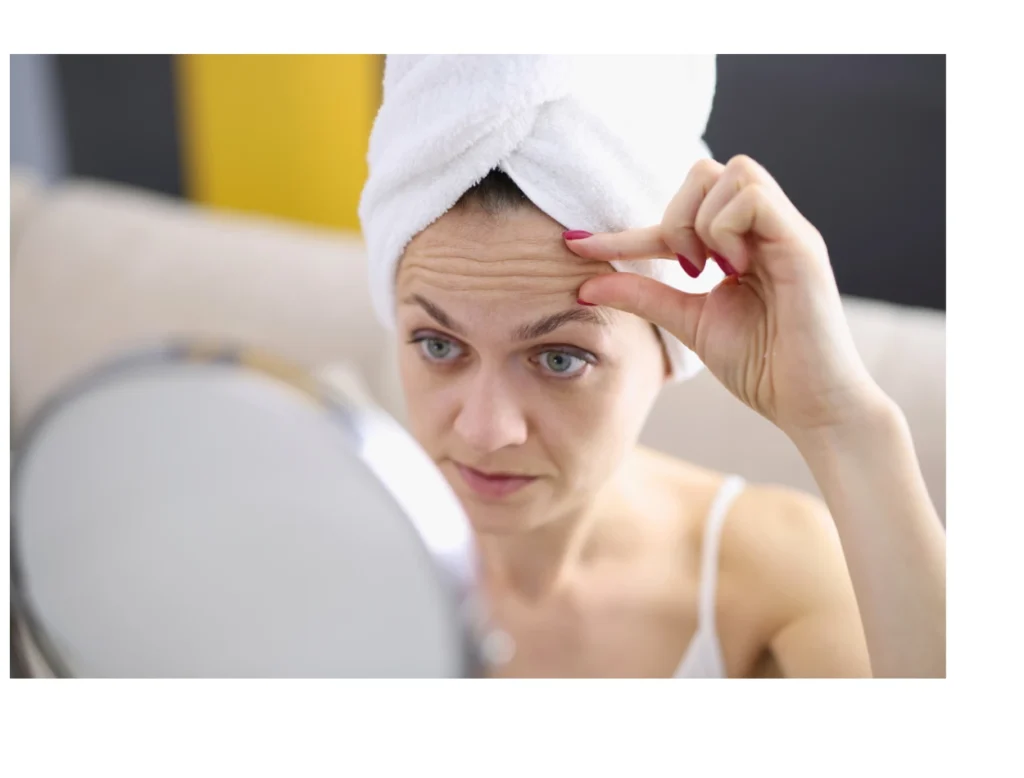
Frequently Asked Questions
How Many Units Of Botox Are Needed For Forehead Lines?
Typically, 10-30 units of Botox are needed for forehead lines. It depends on the severity and individual needs.
Is 20 Units Of Botox Enough For Forehead?
Yes, 20 units can be enough for mild to moderate forehead lines. Consult a professional for precise recommendations.
How Often Should I Get Botox For My Forehead?
Every 3-4 months. This ensures the best results and maintains smoothness.
What Is The Cost Of Botox For The Forehead?
Costs vary widely. On average, it ranges from $200 to $500 per treatment.
Conclusion
Determining the right Botox units for the forehead is crucial. Consult a professional to tailor treatment to your needs. Typically, 10-30 units are used for optimal results. Always prioritize safety and follow expert advice. Research and understand your options thoroughly.
This helps ensure satisfaction and desired outcomes. Remember, everyone’s needs are unique. Regular follow-ups can maintain the look you want. Make informed choices for the best experience.

